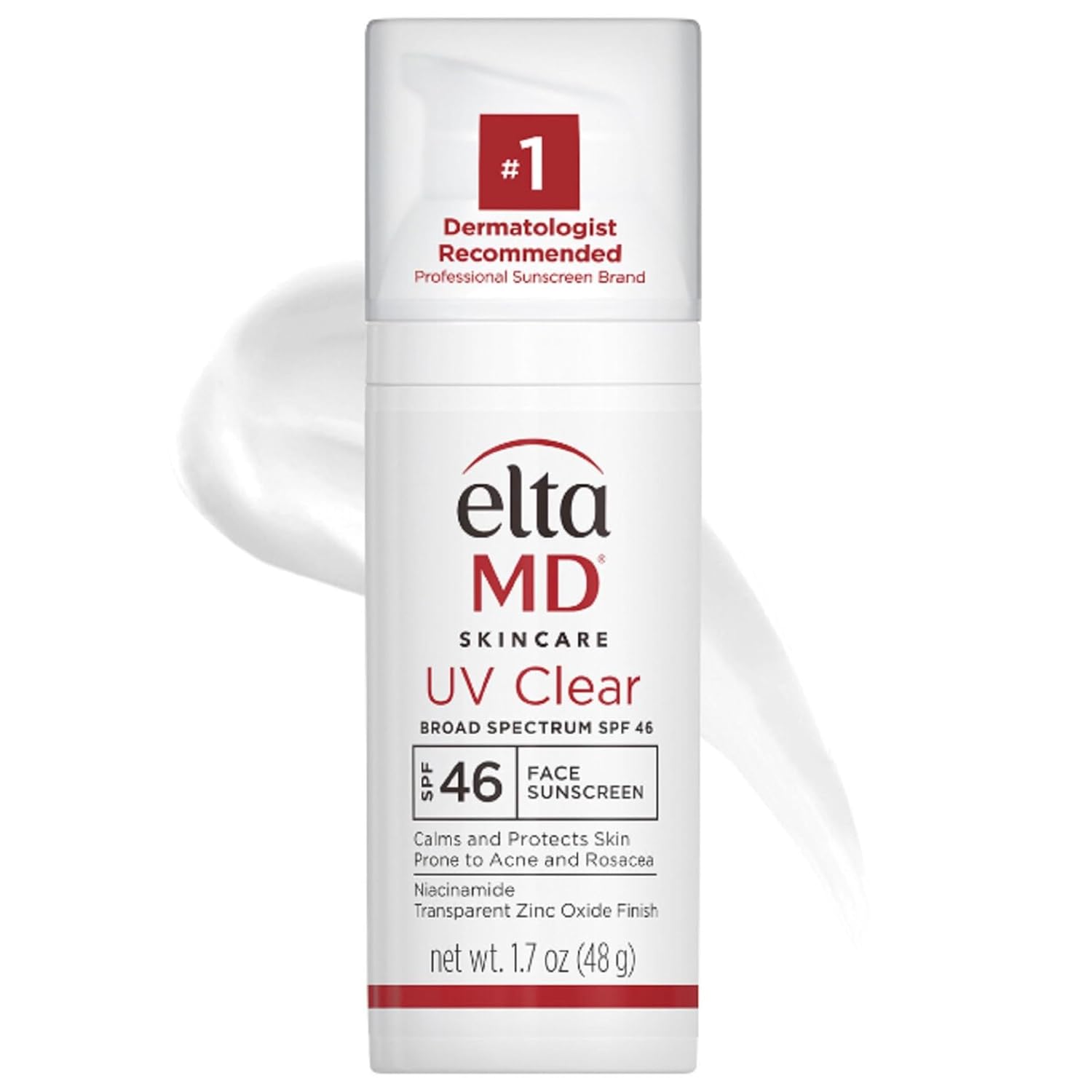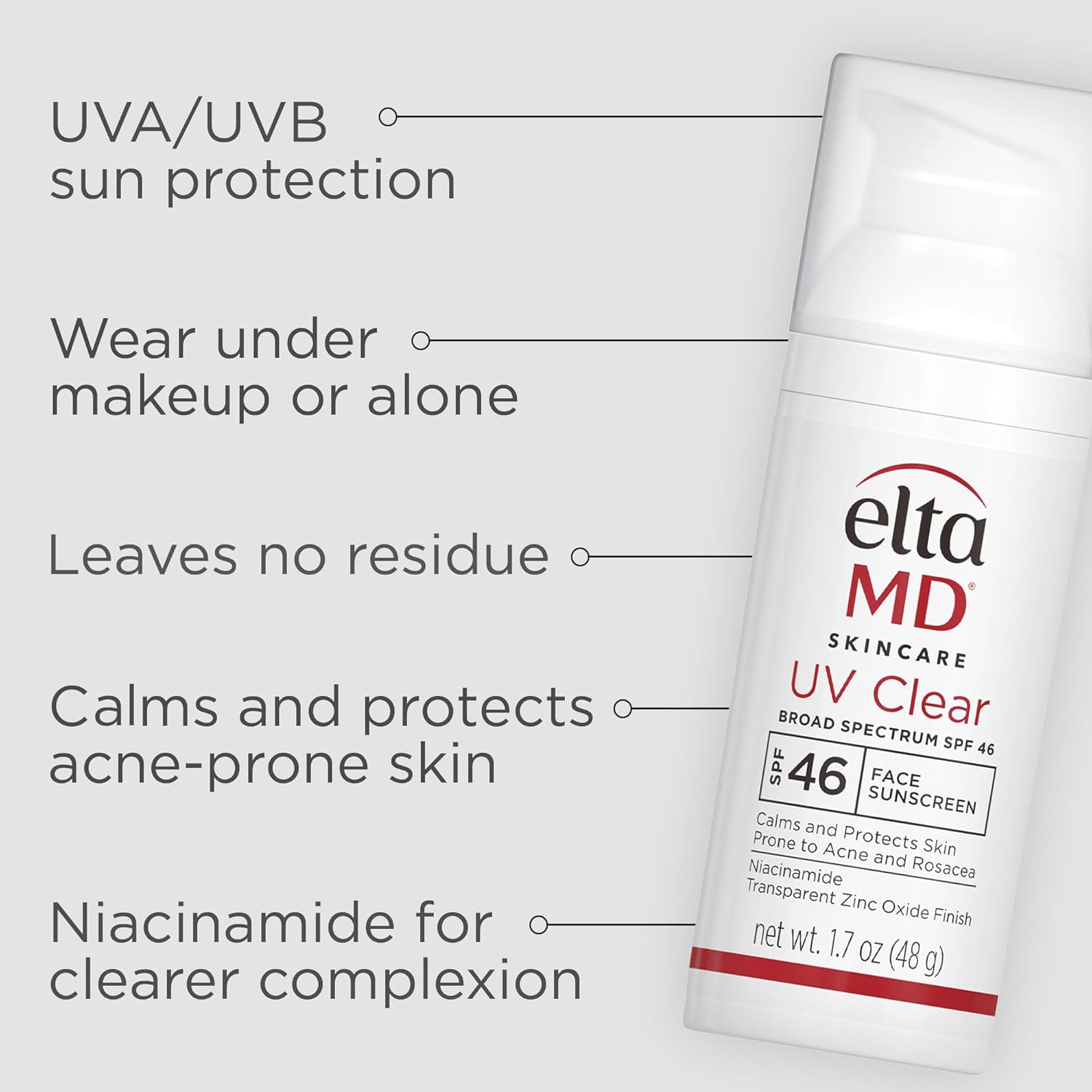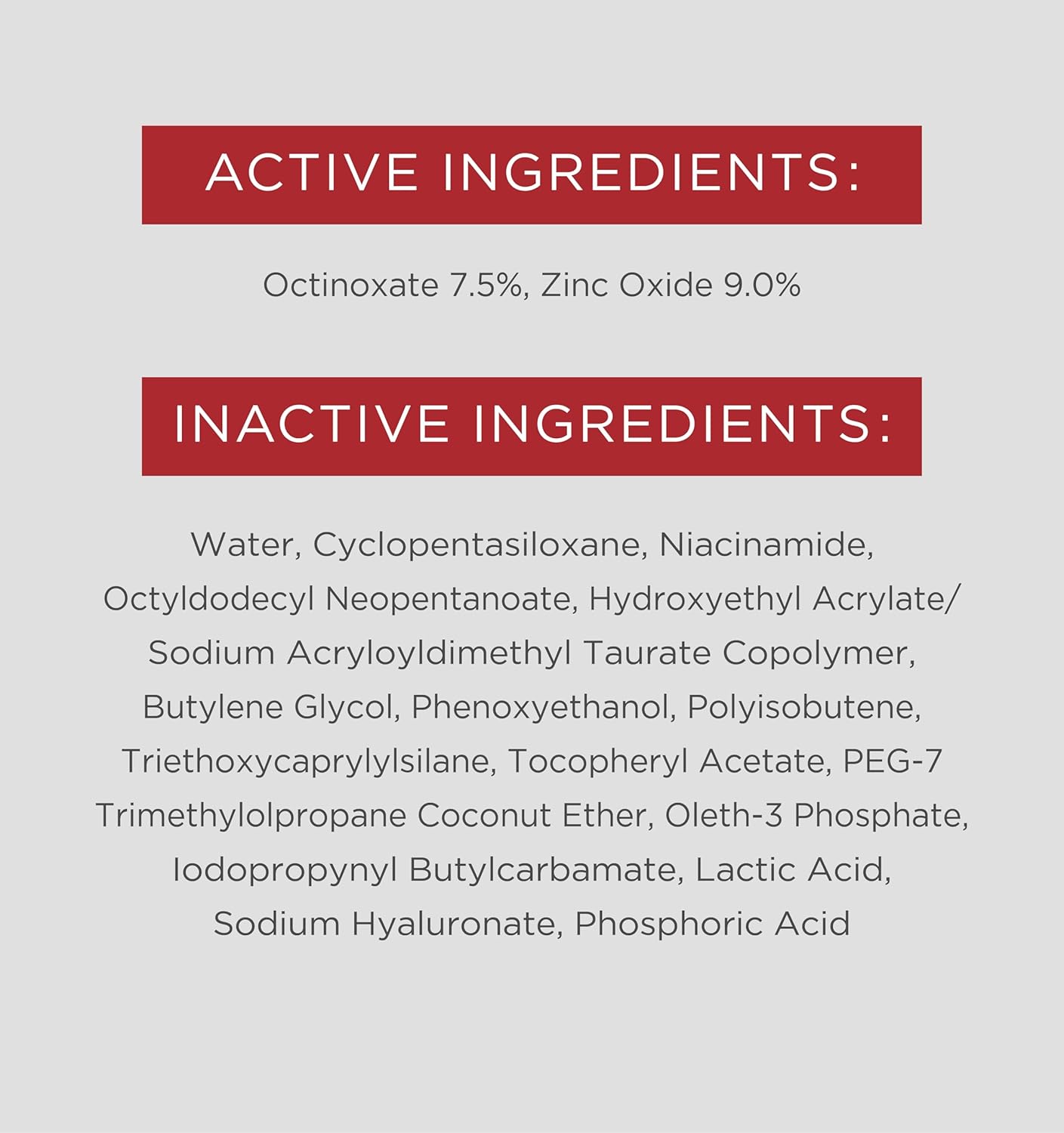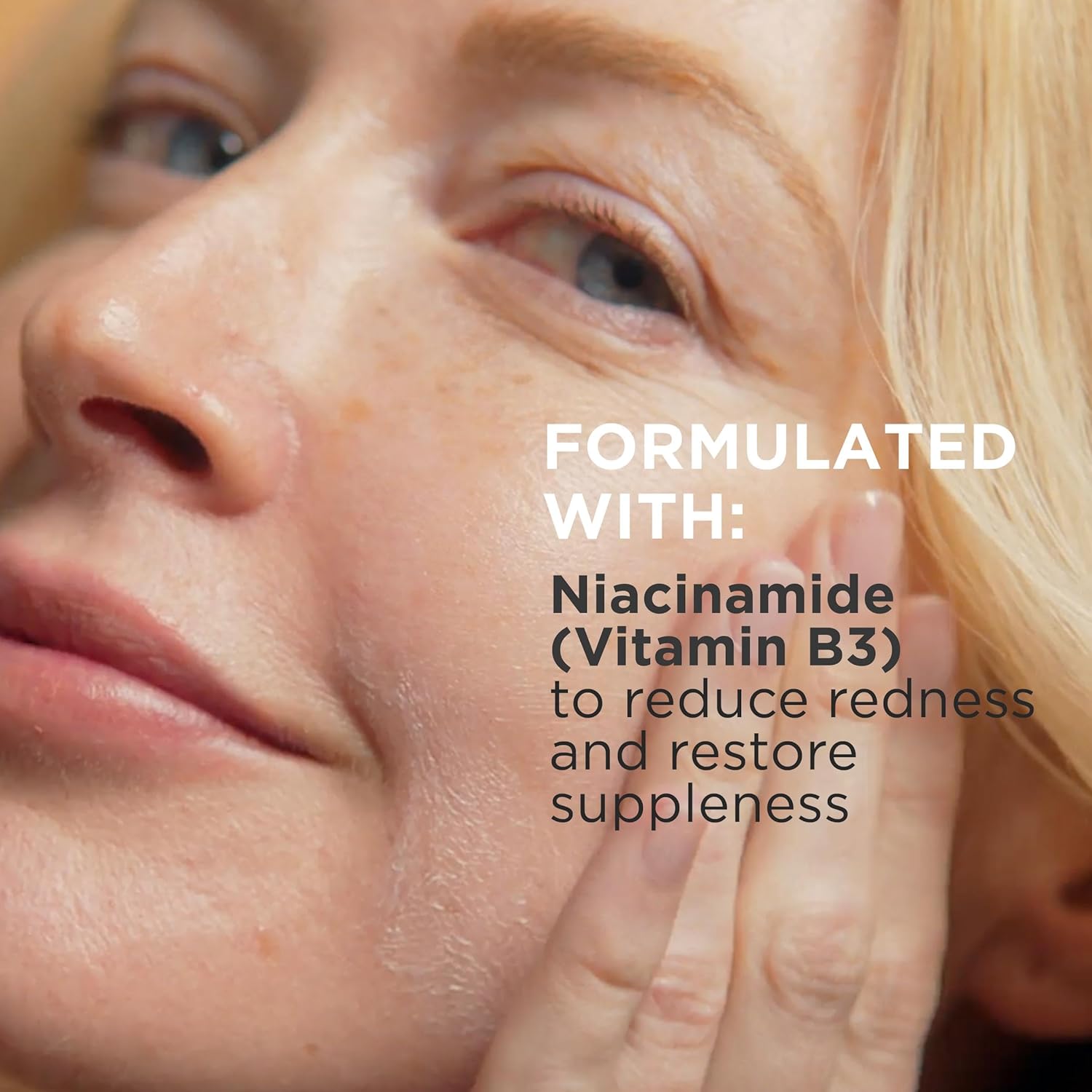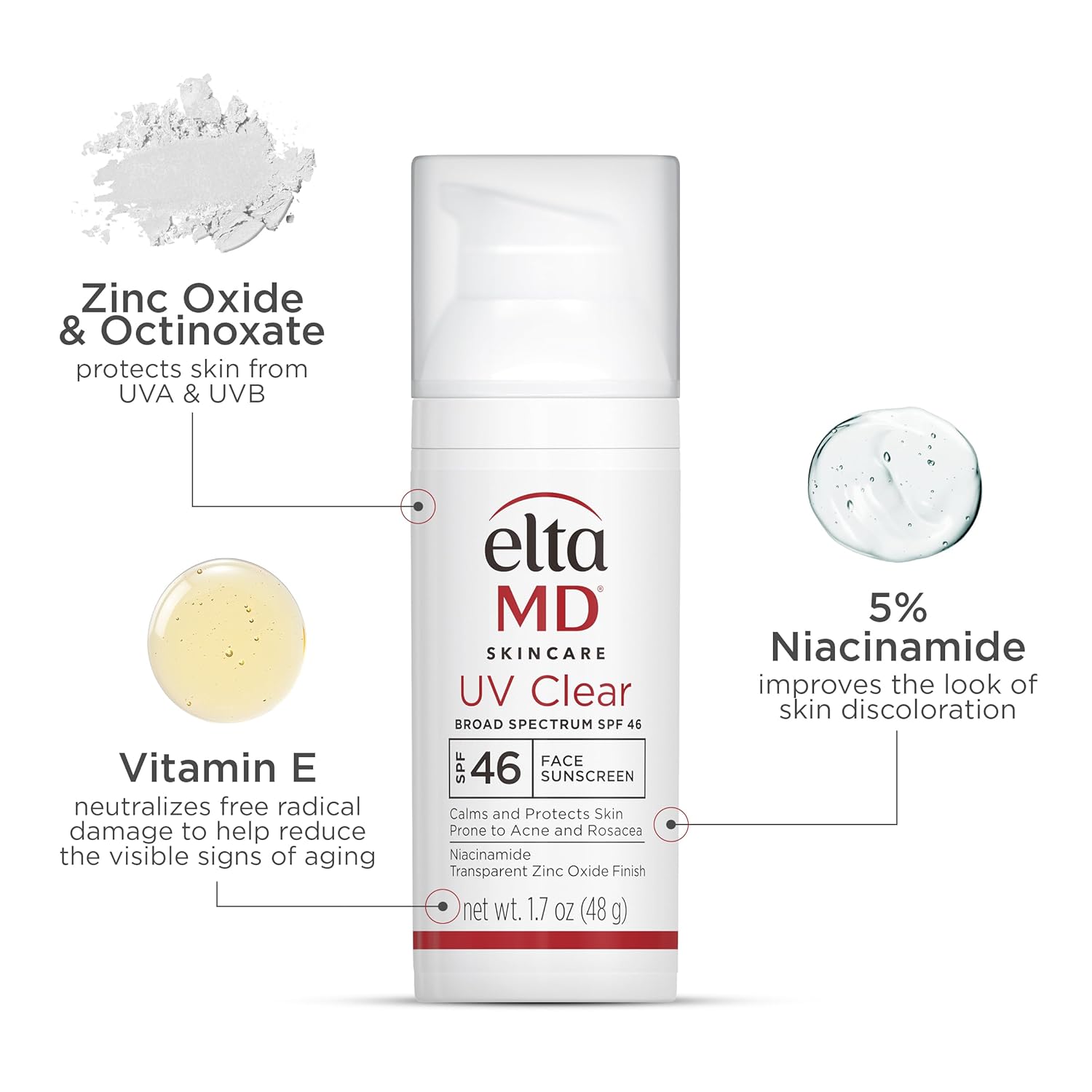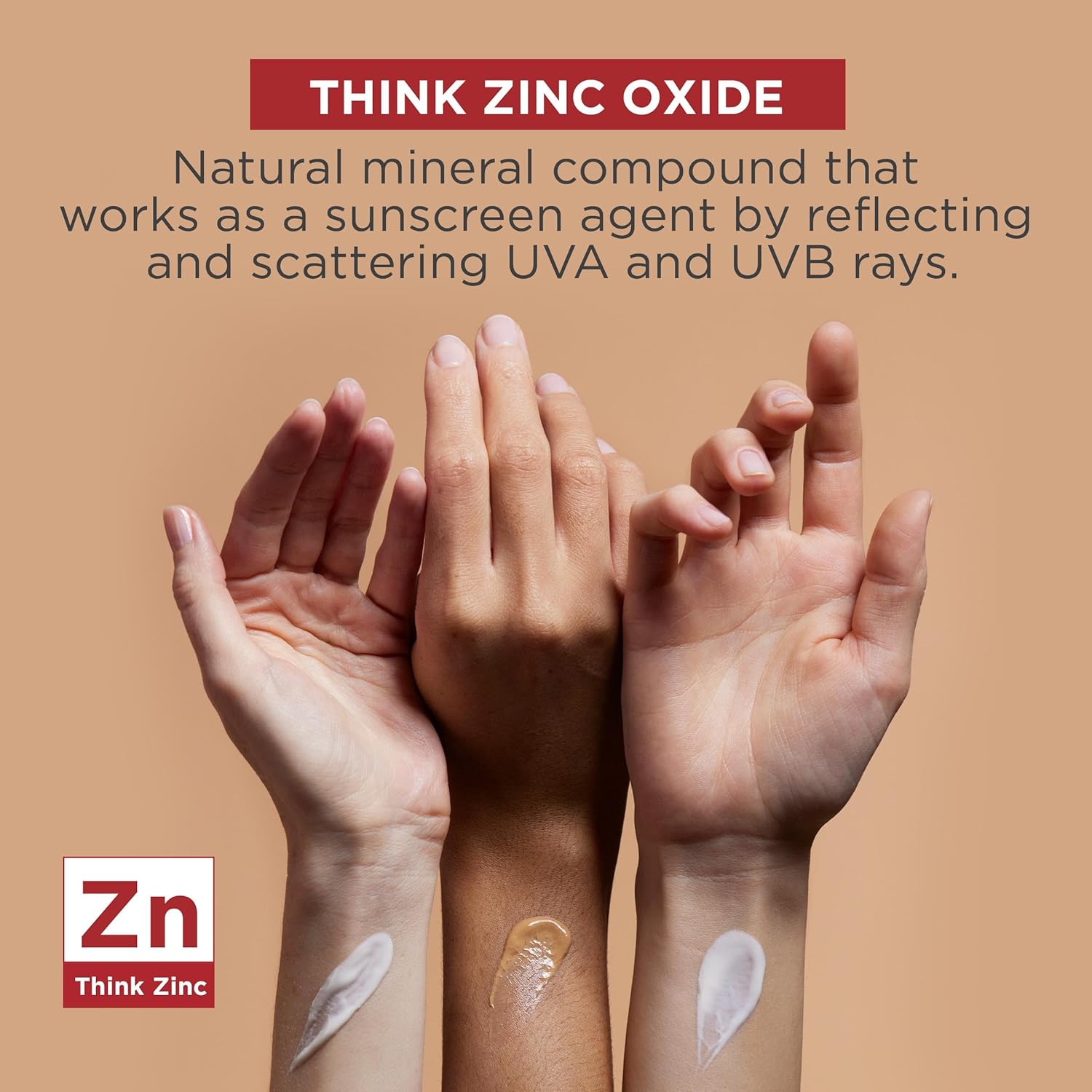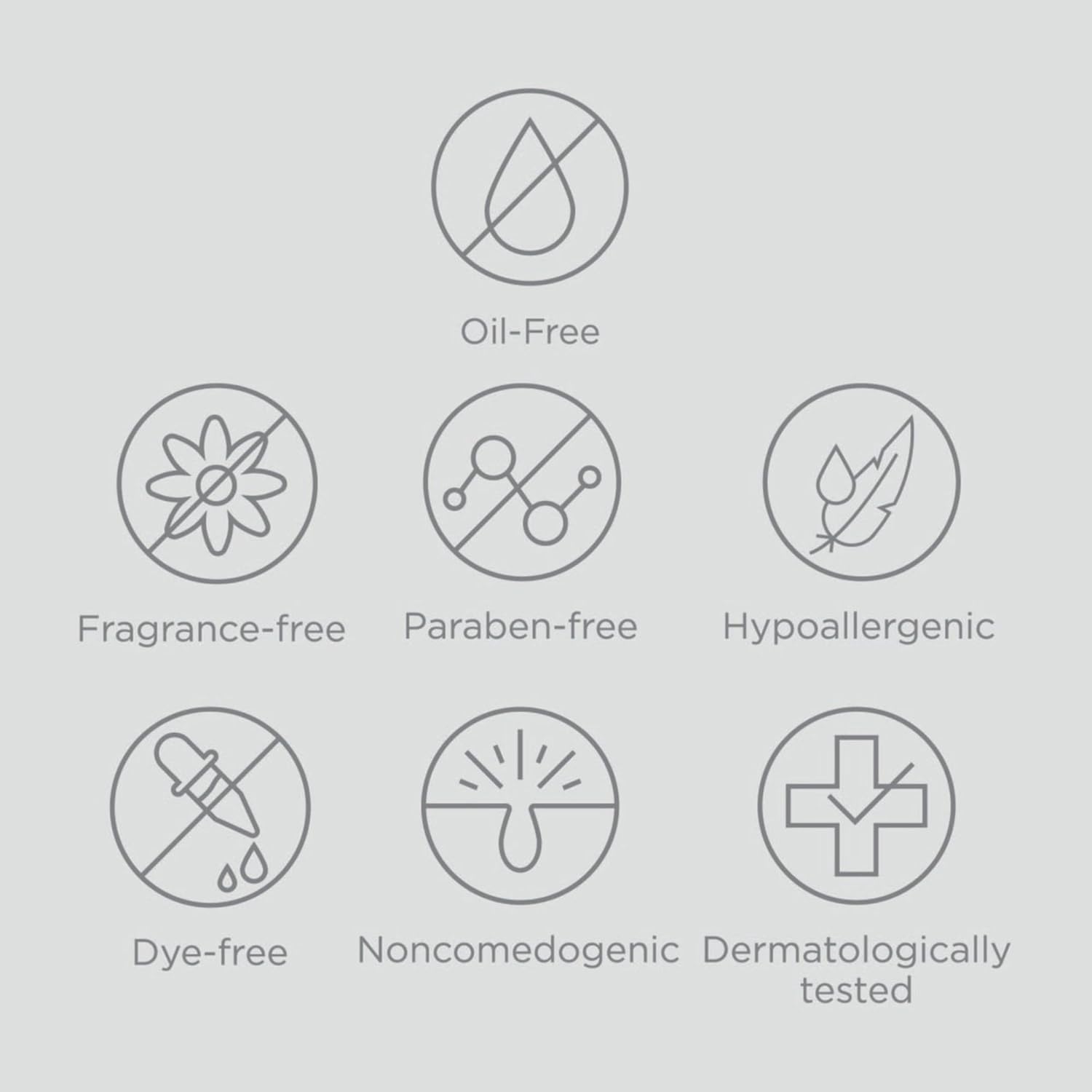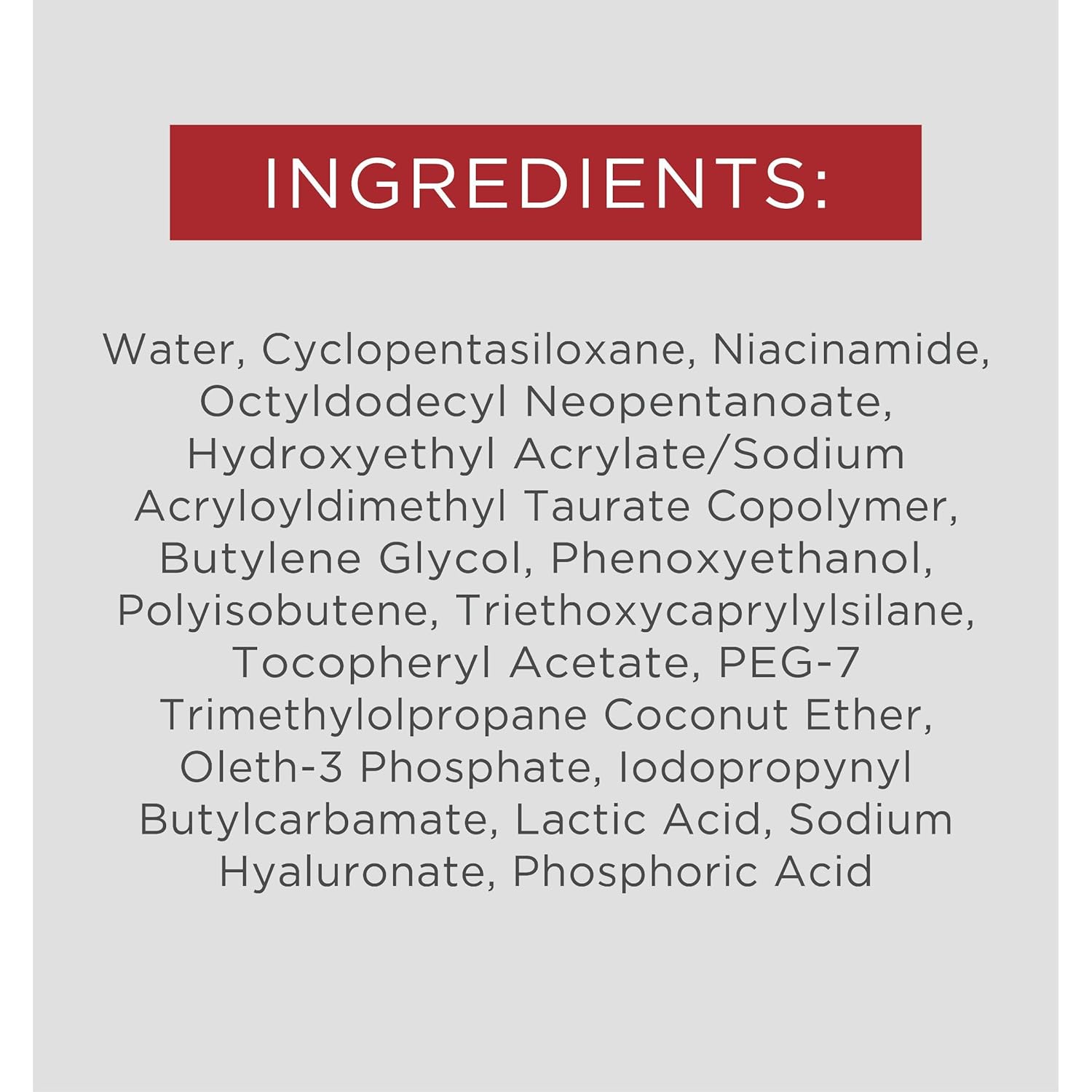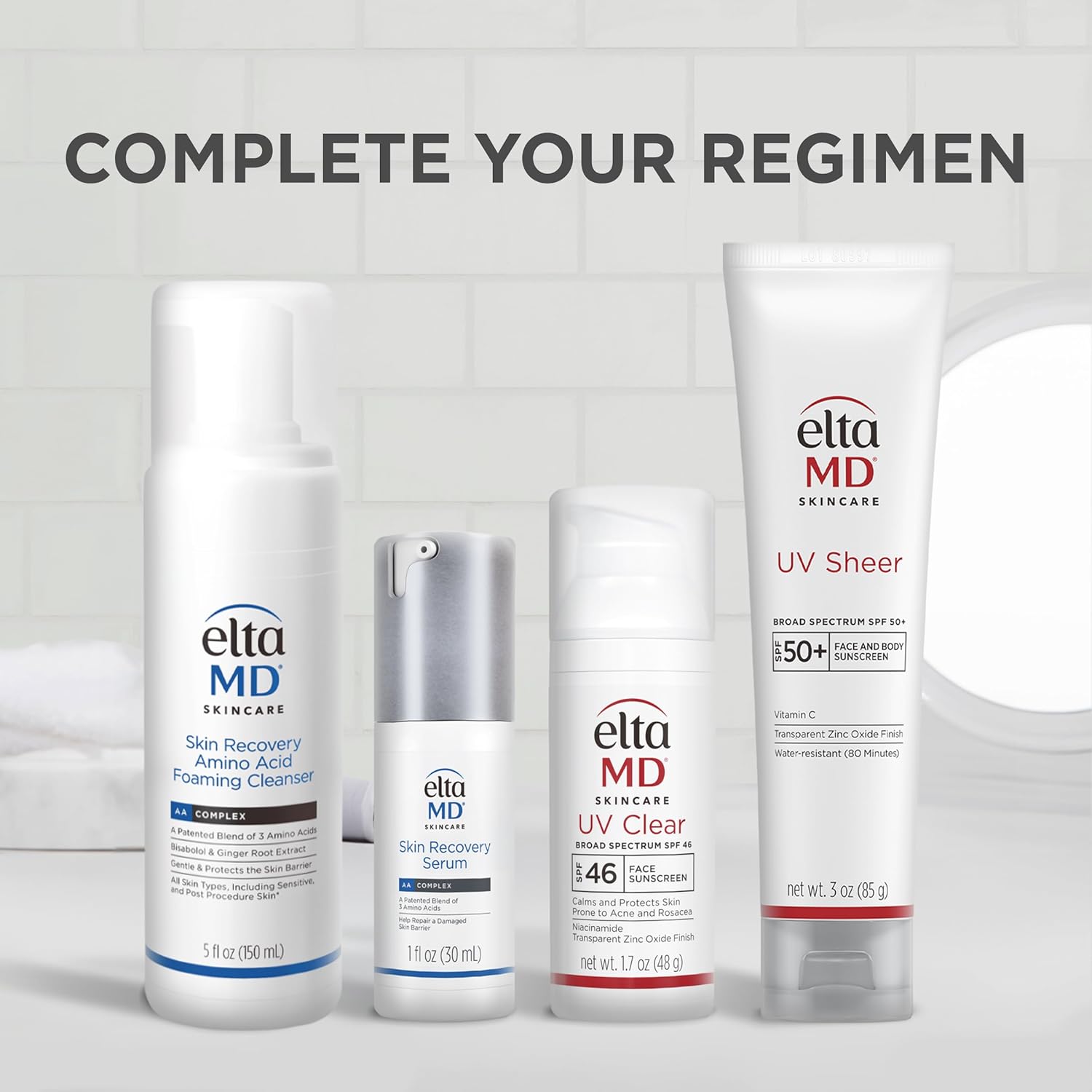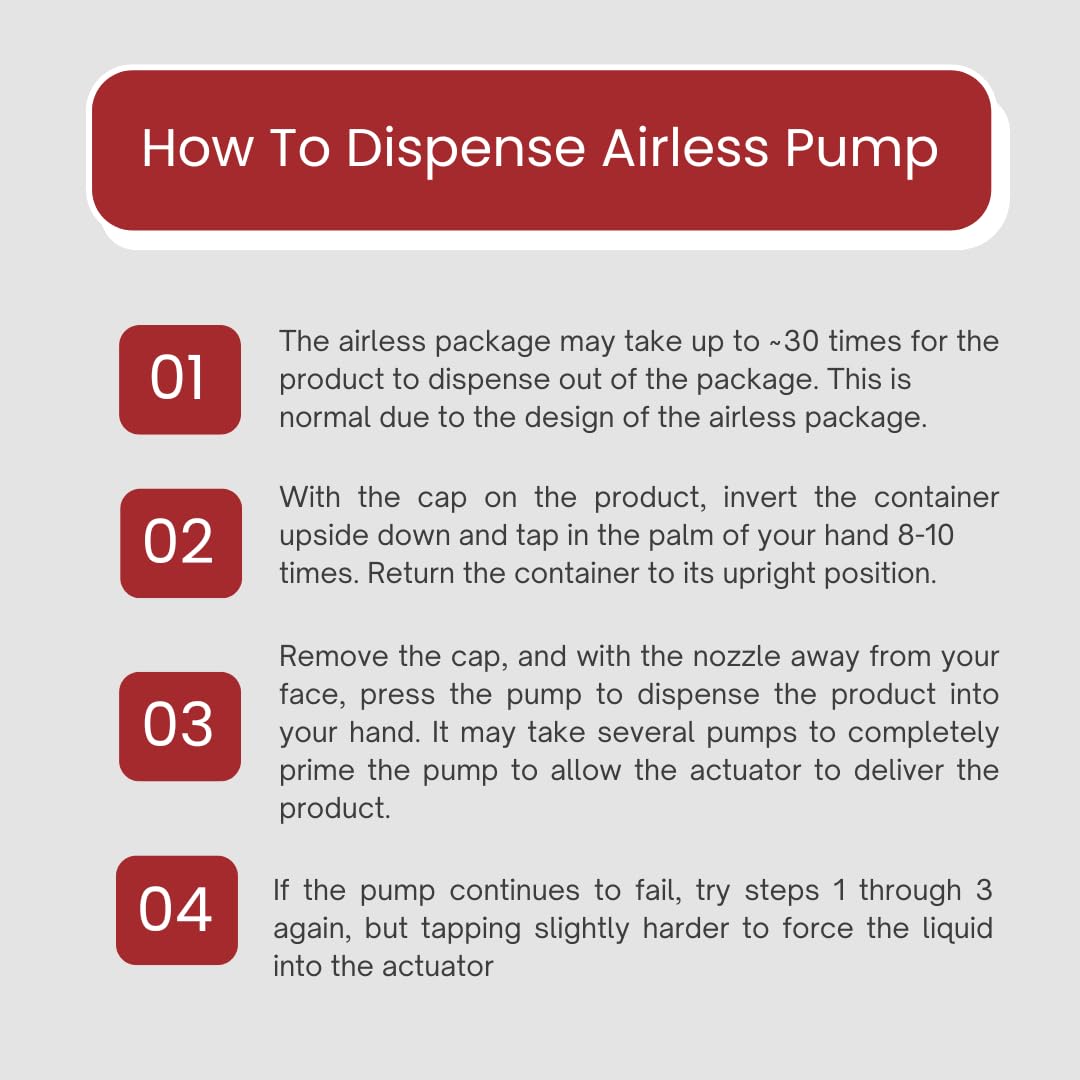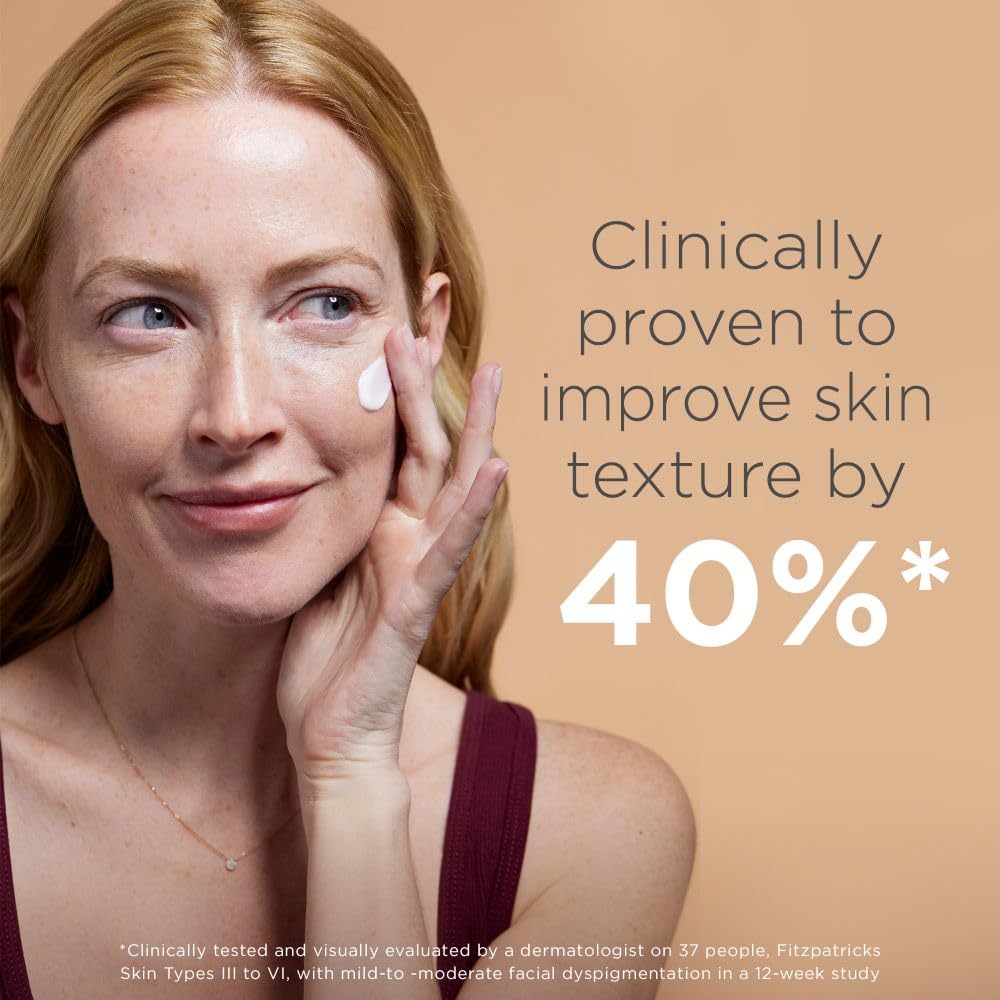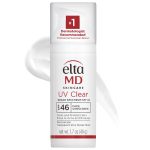
EltaMD UV Clear Face Sunscreen SPF 46, Review sunscreen Buying Guide – Oemiu
EltaMD UV Clear Face Sunscreen SPF 46: Unlocking Radiant Skin with Sun Protection
Navigating the vast world of skincare can feel like traversing a complex maze, especially when it comes to sun protection. With countless brands vying for your attention, each promising superior defense against the sun’s harmful rays, finding the right sunscreen can be a daunting task. But fear not, for we’re here to shed light on a popular contender: EltaMD UV Clear Face Sunscreen SPF 46. This sunscreen has garnered considerable praise within the skincare community, particularly among those with acne-prone or sensitive skin. But does it truly live up to the hype? This in-depth review will explore the intricacies of EltaMD UV Clear, analyzing its formulation, performance, and suitability for various skin types. We will also delve into the broader landscape of sunscreen buying, offering valuable insights and tips to help you make informed decisions and select the best sun protection for your individual needs. Consider this your comprehensive guide to achieving radiant, healthy skin while effectively shielding yourself from the sun’s damaging effects.
Decoding the Formula: A Deep Dive into EltaMD UV Clear’s Ingredients
The effectiveness of any sunscreen hinges on its formulation. EltaMD UV Clear boasts a carefully curated blend of active and inactive ingredients designed to provide broad-spectrum protection while minimizing irritation. The active ingredients, which are responsible for blocking UV radiation, include 9.0% Zinc Oxide and 7.5% Octinoxate. Zinc Oxide is a mineral sunscreen ingredient known for its broad-spectrum coverage and gentle nature, making it ideal for sensitive skin. It works by creating a physical barrier on the skin’s surface, reflecting UV rays away. Octinoxate, on the other hand, is a chemical sunscreen ingredient that absorbs UV radiation and converts it into heat, which is then released from the skin. The combination of these two ingredients provides robust protection against both UVA and UVB rays, safeguarding your skin from sunburn, premature aging, and skin cancer.
Beyond the active ingredients, EltaMD UV Clear also contains a host of beneficial inactive ingredients. Niacinamide (Vitamin B3) is included for its anti-inflammatory and skin-brightening properties. It helps to reduce redness, minimize the appearance of pores, and improve skin tone. Hyaluronic Acid, a powerful humectant, draws moisture from the air and binds it to the skin, keeping it hydrated and supple. Tocopheryl Acetate (Vitamin E) acts as an antioxidant, protecting the skin from free radical damage caused by UV exposure and environmental pollutants. All these ingredients work in synergy to not only protect your skin from the sun but also improve its overall health and appearance. Its noncomedogenic formulation ensures that it won’t clog pores, a crucial factor for individuals with oily or acne-prone skin. Furthermore, it’s fragrance-free, paraben-free, and sensitivity-free, further minimizing the risk of irritation.
Performance Under Pressure: Evaluating EltaMD UV Clear’s Sun Protection Capabilities
A sunscreen’s true test lies in its ability to withstand real-world conditions. EltaMD UV Clear has been rigorously tested to ensure its efficacy and stability. With an SPF of 46, it provides substantial protection against UVB rays, the primary cause of sunburn. The SPF rating indicates the amount of time it takes for the skin to redden when exposed to UVB rays compared to unprotected skin. For example, if you typically burn after 10 minutes in the sun without sunscreen, SPF 46 would theoretically allow you to stay in the sun for 460 minutes (10 minutes x 46) before burning. However, this is a theoretical calculation, and factors like skin type, sun intensity, and application technique can influence the actual protection time. It is always recommended to reapply every two hours, or immediately after swimming or sweating.
In addition to UVB protection, EltaMD UV Clear also offers broad-spectrum protection against UVA rays. UVA rays penetrate deeper into the skin than UVB rays and contribute to premature aging, wrinkles, and hyperpigmentation. The presence of Zinc Oxide in the formula ensures robust UVA protection, as it reflects a wide range of UVA wavelengths. EltaMD UV Clear’s lightweight and non-greasy formula makes it comfortable to wear under makeup, making it an excellent option for daily use. It absorbs quickly into the skin without leaving a white cast, a common issue with many mineral sunscreens. Its suitability for sensitive skin is further enhanced by the absence of potentially irritating ingredients like fragrances and parabens. However, as with any sunscreen, it’s essential to perform a patch test before applying it to your entire face, especially if you have known allergies or sensitivities. Many dermatologists recommend this face sunscreen for acne prone skin.
The User Experience: Application, Texture, and Aesthetic Considerations
Beyond its protective capabilities, the user experience is a crucial factor in determining whether a sunscreen becomes a staple in your skincare routine. EltaMD UV Clear excels in this area, offering a texture and feel that many users find appealing. The sunscreen has a lightweight, almost lotion-like consistency that spreads easily and evenly across the skin. It absorbs quickly without leaving a greasy or sticky residue, a common complaint with many sunscreens, making it comfortable to wear throughout the day.
One of the most significant advantages of EltaMD UV Clear is its ability to blend seamlessly into the skin without leaving a white cast. This is particularly important for individuals with darker skin tones, as many mineral sunscreens can leave a noticeable white or greyish tint. The formulation has been carefully crafted to minimize this effect, ensuring a natural and even finish. Its non-comedogenic properties make it suitable for oily and acne-prone skin, as it won’t clog pores or contribute to breakouts. In fact, many users with acne have reported improvements in their skin condition after using EltaMD UV Clear. The presence of Niacinamide helps to reduce inflammation and redness associated with acne, while Hyaluronic Acid keeps the skin hydrated and balanced. Its versatility makes it a suitable option for both men and women of all ages. It can be used alone as a daily moisturizer and sunscreen or layered under makeup without causing pilling or separation.
Sunscreen Buying Guide: Navigating the World of Sun Protection
Choosing the right sunscreen can feel like navigating a complex maze, with a multitude of factors to consider. Understanding the different types of sunscreens, SPF ratings, and ingredients is crucial to making an informed decision. This section provides a comprehensive buying guide to help you navigate the world of sun protection and select the best sunscreen for your individual needs. The right sun protection for sensitive skin will have you thanking yourself later.
Understanding Sunscreen Types: Mineral vs. Chemical
Sunscreens broadly fall into two categories: mineral and chemical. Mineral sunscreens, also known as physical sunscreens, contain mineral ingredients like Zinc Oxide and Titanium Dioxide. These ingredients work by creating a physical barrier on the skin’s surface, reflecting UV rays away. Mineral sunscreens are generally considered to be gentler on the skin and are often recommended for sensitive skin, children, and pregnant women. They provide broad-spectrum protection and are effective immediately upon application.
Chemical sunscreens, on the other hand, contain chemical filters that absorb UV radiation and convert it into heat, which is then released from the skin. These filters include ingredients like Oxybenzone, Octinoxate, Avobenzone, and Octisalate. Chemical sunscreens are typically lighter in texture and easier to spread than mineral sunscreens. However, some chemical filters have been linked to skin irritation and potential environmental concerns. While both types of sunscreens are effective at protecting the skin from sun damage, mineral sunscreens are often preferred for their gentler nature and broader spectrum protection.
SPF Ratings: Deciphering the Numbers
The Sun Protection Factor (SPF) rating indicates the level of protection a sunscreen provides against UVB rays. As previously mentioned, UVB rays are the primary cause of sunburn. The higher the SPF, the more protection the sunscreen offers. However, the increase in protection diminishes as the SPF increases. For example, SPF 15 blocks approximately 93% of UVB rays, while SPF 30 blocks about 97%, and SPF 50 blocks around 98%.
While SPF 100 offers slightly higher protection, it’s not significantly more effective than SPF 50. It is crucial to note that SPF only measures protection against UVB rays, not UVA rays. To ensure comprehensive protection, look for sunscreens labeled “broad-spectrum,” which indicates that they protect against both UVA and UVB rays. Dermatologists generally recommend using a sunscreen with an SPF of 30 or higher for adequate sun protection. Regardless of the SPF rating, it’s essential to apply sunscreen generously and reapply every two hours, or immediately after swimming or sweating.
Decoding the Ingredient List: What to Look For and Avoid
Reading the ingredient list of a sunscreen can be overwhelming, but it’s essential to understand what you’re putting on your skin. Look for active ingredients like Zinc Oxide and Titanium Dioxide for broad-spectrum mineral protection. Other beneficial ingredients include antioxidants like Vitamin C and Vitamin E, which protect the skin from free radical damage. Hyaluronic Acid can help to hydrate the skin, while Niacinamide can reduce inflammation and improve skin tone.
On the other hand, certain ingredients are best avoided, especially if you have sensitive skin. These include fragrances, parabens, oxybenzone, and octinoxate. Fragrances are a common cause of skin irritation and allergic reactions. Parabens are preservatives that have been linked to potential health concerns. Oxybenzone and Octinoxate are chemical filters that have been shown to disrupt hormones and harm coral reefs. When in doubt, choose sunscreens with simple, natural ingredients and avoid those with long lists of unfamiliar chemicals.
| Feature | EltaMD UV Clear | Generic Sunscreen |
|---|---|---|
| SPF | 46 | Variable (15-50+) |
| Active Ingredients | Zinc Oxide, Octinoxate | Variable (Chemical or Mineral) |
| Skin Type | Sensitive, Acne-Prone | Variable |
| Texture | Lightweight, Non-Greasy | Variable (Can be Heavy or Greasy) |
| White Cast | Minimal to None | May Leave a White Cast |
| Additional Benefits | Contains Niacinamide and Hyaluronic Acid | May Contain Additional Ingredients |
Application Techniques: Maximizing Sun Protection
The effectiveness of any sunscreen depends on how it’s applied. Most people don’t apply enough sunscreen, resulting in inadequate protection. Dermatologists recommend using about one ounce (shot glass full) of sunscreen to cover the entire body. For the face, aim for about a nickel-sized amount. Apply sunscreen at least 15-30 minutes before sun exposure to allow it to absorb into the skin.
Be sure to apply sunscreen to all exposed areas, including the face, neck, ears, hands, and feet. Don’t forget often-overlooked areas like the hairline and the tops of the ears. Reapply sunscreen every two hours, or immediately after swimming or sweating. Even water-resistant sunscreens lose their effectiveness over time and need to be reapplied regularly. When applying sunscreen under makeup, choose a lightweight formula that won’t cause pilling or separation. Consider using a sunscreen stick or powder for easy reapplication throughout the day.
Real-World Application: Scenarios and Recommendations
EltaMD UV Clear’s versatility makes it suitable for a wide range of scenarios. For daily wear, it can be used as a standalone moisturizer and sunscreen, providing adequate protection for everyday activities like running errands or commuting to work. Its lightweight texture makes it comfortable to wear under makeup, making it an excellent option for those who wear foundation or other cosmetic products.
For outdoor activities like hiking, swimming, or playing sports, it’s essential to choose a water-resistant sunscreen and reapply it frequently. EltaMD UV Clear is water-resistant for up to 40 minutes, making it suitable for light swimming or sweating. However, for prolonged water exposure or heavy sweating, it’s recommended to choose a sunscreen with higher water resistance and reapply it more frequently. In hot and humid climates, EltaMD UV Clear’s non-greasy formula can help to prevent clogged pores and breakouts. Its oil-free formula won’t exacerbate oily skin or leave a shiny residue. For individuals with sensitive skin or skin conditions like eczema or rosacea, EltaMD UV Clear’s gentle formulation can help to minimize irritation and redness. Its fragrance-free and paraben-free formula is less likely to cause allergic reactions or flare-ups. So, the next time you are thinking about sun protection for your face, keep the aforementioned in mind.
Frequently Asked Questions (FAQ)
What is the difference between mineral and chemical sunscreens?
Mineral sunscreens, often considered the best mineral sunscreen available, utilize mineral ingredients like zinc oxide and titanium dioxide to create a physical barrier on the skin, reflecting UV rays away. They are generally well-tolerated, even by those with sensitive skin, and work immediately upon application. Chemical sunscreens, on the other hand, employ chemical filters that absorb UV radiation and convert it into heat, which is then released from the skin. While they tend to be lighter and easier to spread, some chemical filters have raised concerns regarding skin irritation and environmental impact. Ultimately, the choice between mineral and chemical sunscreen depends on individual preferences and skin sensitivities. Opting for a mineral-based formula can be a safer bet for sensitive skin, while chemical sunscreens might be preferred for their lighter texture and ease of application. Always read the ingredient list and consider your specific needs before making a decision.
How much sunscreen should I apply, and how often?
The general recommendation is to apply about one ounce (a shot glass full) of sunscreen to cover the entire body, including the face, neck, ears, and hands. For the face alone, a nickel-sized amount is typically sufficient. It’s important to apply sunscreen generously and evenly, ensuring that all exposed areas are adequately protected. Sunscreen should be applied at least 15-30 minutes before sun exposure to allow it to absorb into the skin. Reapplication is crucial for maintaining adequate protection, especially after swimming, sweating, or towel drying. The standard guideline is to reapply sunscreen every two hours, regardless of the SPF rating. Even if you’re using a high-SPF sunscreen, regular reapplication is essential to compensate for factors like sweating, rubbing, and degradation of the sunscreen’s effectiveness over time. Proper application and frequent reapplication are key to maximizing the protective benefits of sunscreen.
What does “broad-spectrum” mean?
The term “broad-spectrum” on a sunscreen label indicates that the product protects against both UVA and UVB rays. UVB rays are primarily responsible for sunburn, while UVA rays penetrate deeper into the skin and contribute to premature aging, wrinkles, and hyperpigmentation. Both UVA and UVB rays can also increase the risk of skin cancer. Therefore, it’s crucial to choose a sunscreen that offers broad-spectrum protection to safeguard your skin from a wide range of sun-induced damage. Sunscreens that only protect against UVB rays leave you vulnerable to the harmful effects of UVA radiation. Broad-spectrum sunscreens typically contain a combination of ingredients that effectively block both types of UV rays, ensuring comprehensive protection for your skin. Always look for the “broad-spectrum” label when selecting a sunscreen to ensure you’re getting the most complete protection possible.
Is EltaMD UV Clear suitable for acne-prone skin?
Yes, EltaMD UV Clear is generally considered to be suitable for acne-prone skin. Its non-comedogenic formula means that it won’t clog pores, a crucial factor for individuals prone to breakouts. In fact, many users with acne have reported improvements in their skin condition after using EltaMD UV Clear. One of the key ingredients in EltaMD UV Clear is niacinamide (vitamin B3), which has anti-inflammatory properties that can help to reduce redness and inflammation associated with acne. Additionally, niacinamide can help to regulate sebum production, which can contribute to breakouts. The lightweight, oil-free formula of EltaMD UV Clear also helps to prevent clogged pores and excess shine. It absorbs quickly into the skin without leaving a greasy residue, making it comfortable to wear even on oily or acne-prone skin. However, it’s always recommended to perform a patch test before applying any new product to your entire face, especially if you have sensitive skin or known allergies.
Can I use EltaMD UV Clear under makeup?
Yes, EltaMD UV Clear is an excellent option for wearing under makeup. Its lightweight, non-greasy formula absorbs quickly into the skin without leaving a sticky or shiny residue. This makes it an ideal base for makeup application, as it won’t cause pilling or separation. Many users appreciate that EltaMD UV Clear doesn’t interfere with the application or wear of their foundation, concealer, or other makeup products. In fact, some users find that it helps to create a smoother canvas for makeup application. Its minimal white cast also ensures that it won’t affect the color or appearance of your makeup. When applying EltaMD UV Clear under makeup, allow it to absorb fully into the skin before applying any other products. This will help to prevent pilling and ensure that your makeup applies smoothly and evenly. You can also reapply sunscreen throughout the day by using a sunscreen stick or powder over your makeup.
Is a higher SPF always better?
While a higher SPF does provide more protection against UVB rays, the increase in protection diminishes as the SPF increases. For example, SPF 30 blocks approximately 97% of UVB rays, while SPF 50 blocks about 98%. SPF 100 offers slightly higher protection, but it’s not significantly more effective than SPF 50. The key takeaway is that SPF 30 or higher is generally recommended for adequate sun protection. However, the SPF rating is just one factor to consider. The more important thing is to apply enough sunscreen and reapply it frequently, regardless of the SPF rating. Most people don’t apply enough sunscreen, resulting in inadequate protection, even with a high SPF. So, while choosing a higher SPF sunscreen might provide a slight increase in protection, it’s more important to focus on proper application and reapplication.
How do I choose the right sunscreen for my skin type?
Oily Skin
People with oily skin should consider an oil-free and non-comedogenic sunscreen to avoid clogging pores. Gel and lightweight lotion formulations are a good choice.
Dry Skin
People with dry skin should consider a hydrating formula, for example a cream or lotion with added moisturizing components, such as hyaluronic acid or glycerin.
Sensitive Skin
People with sensitive skin should choose a mineral sunscreen with zinc oxide or titanium dioxide and without fragrances or parabens, which can cause irritation.
What are the long-term benefits of wearing sunscreen daily?
Wearing sunscreen daily, even on cloudy days, offers a multitude of long-term benefits for your skin. Most importantly, it significantly reduces the risk of skin cancer, the most common type of cancer in the United States. Regular sunscreen use protects your skin from the harmful effects of both UVA and UVB rays, which are major contributors to skin cancer development. In addition to cancer prevention, daily sunscreen use helps to prevent premature aging, including wrinkles, fine lines, and age spots. UVA rays penetrate deep into the skin and damage collagen and elastin, leading to a loss of firmness and elasticity. By blocking UVA rays, sunscreen helps to preserve the youthful appearance of your skin. Furthermore, sunscreen can help to prevent hyperpigmentation, such as sunspots and melasma, caused by sun exposure. It also protects against sunburn, reducing the risk of blistering, peeling, and long-term skin damage. Incorporating daily sunscreen use into your skincare routine is one of the most effective ways to protect your skin’s health and maintain a youthful, radiant complexion for years to come.
